4.10.2023
SpaceX's giant Starship vehicle towers above turquoise waters in gorgeous photo
The image shows off the natural beauty surrounding SpaceX's Starbase site in South Texas.
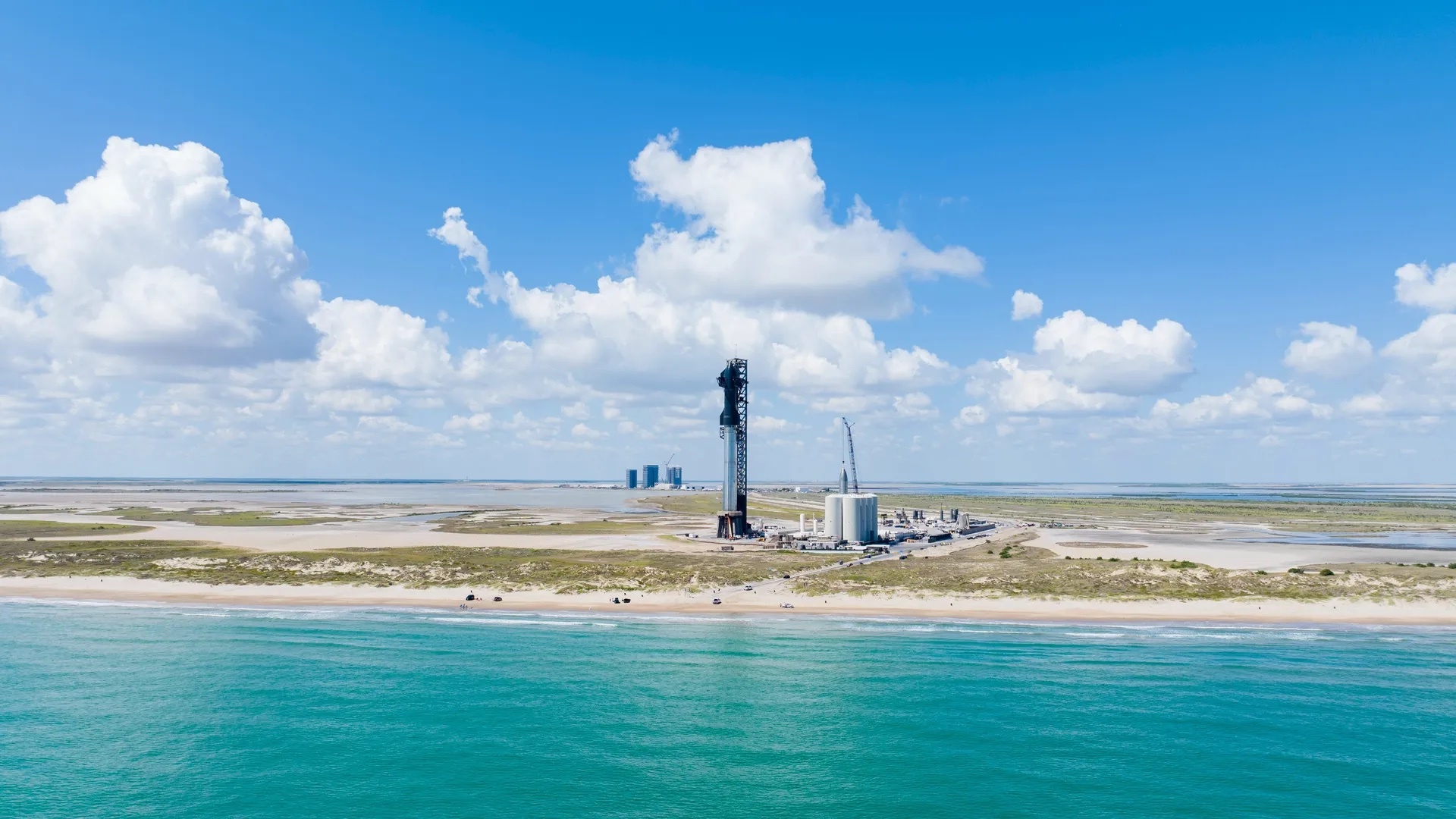
SpaceX's fully stacked Starship vehicle stands on the orbital launch mount at the Starbase site in South Texas in this photo, which the company posted on X on Sept. 30, 2023. (Image credit: SpaceX)
It's a rare thing when SpaceX's fully stacked Starship vehicle takes a back seat in a photo.
But it may just have happened, thanks to the natural beauty surrounding Starbase, SpaceX's seaside facility in South Texas. The company captured that beauty in a recent image of Starship on the pad, showing the huge rocket standing between the turquoise waters of a shallow bay, with sandy wetlands and the darker-blue Gulf of Mexico in the background.
"Starship stacked at Starbase ahead of flight, team continues to work with the FAA on a launch license," SpaceX wrote in a Sept. 30 post on X (formerly Twitter), which featured the photo. The FAA is the U.S. Federal Aviation Administration.
As that post notes, SpaceX is gearing up to launch Starship, for the second time ever. The first mission, which lifted off this past April, aimed to send the vehicle's upper stage partway around Earth, with a splashdown targeted for the Pacific Ocean near Hawaii.
That didn't happen, however. Starship suffered a number of problems shortly after launch, including the failure of its two stages to separate, and SpaceX detonated the vehicle intentionally high above the Gulf of Mexico.
The FAA wrapped up its investigation of the April mishap last month but has not yet awarded a license for the second launch, whose aims will be similar to those of the first. SpaceX also needs to secure environmental approval from the U.S. Fish and Wildlife Service, according to Reuters.
SpaceX will likely aim to fly soon after those boxes are checked. Company founder and CEO Elon Musk has said that Starship is ready to go from a technical standpoint.
Starship is the biggest and most powerful rocket ever built, boasting nearly twice the thrust at liftoff as NASA's Space Launch System, the brawniest launcher currently in operation.
The SpaceX vehicle is also designed to be fully and rapidly reusable, the breakthrough needed to make Marscolonization and other ambitious exploration feats economically feasible, according to Musk.
Quelle: SC
----
Update: 22.10.2023
.
SpaceX frustrated by Starship licensing delays
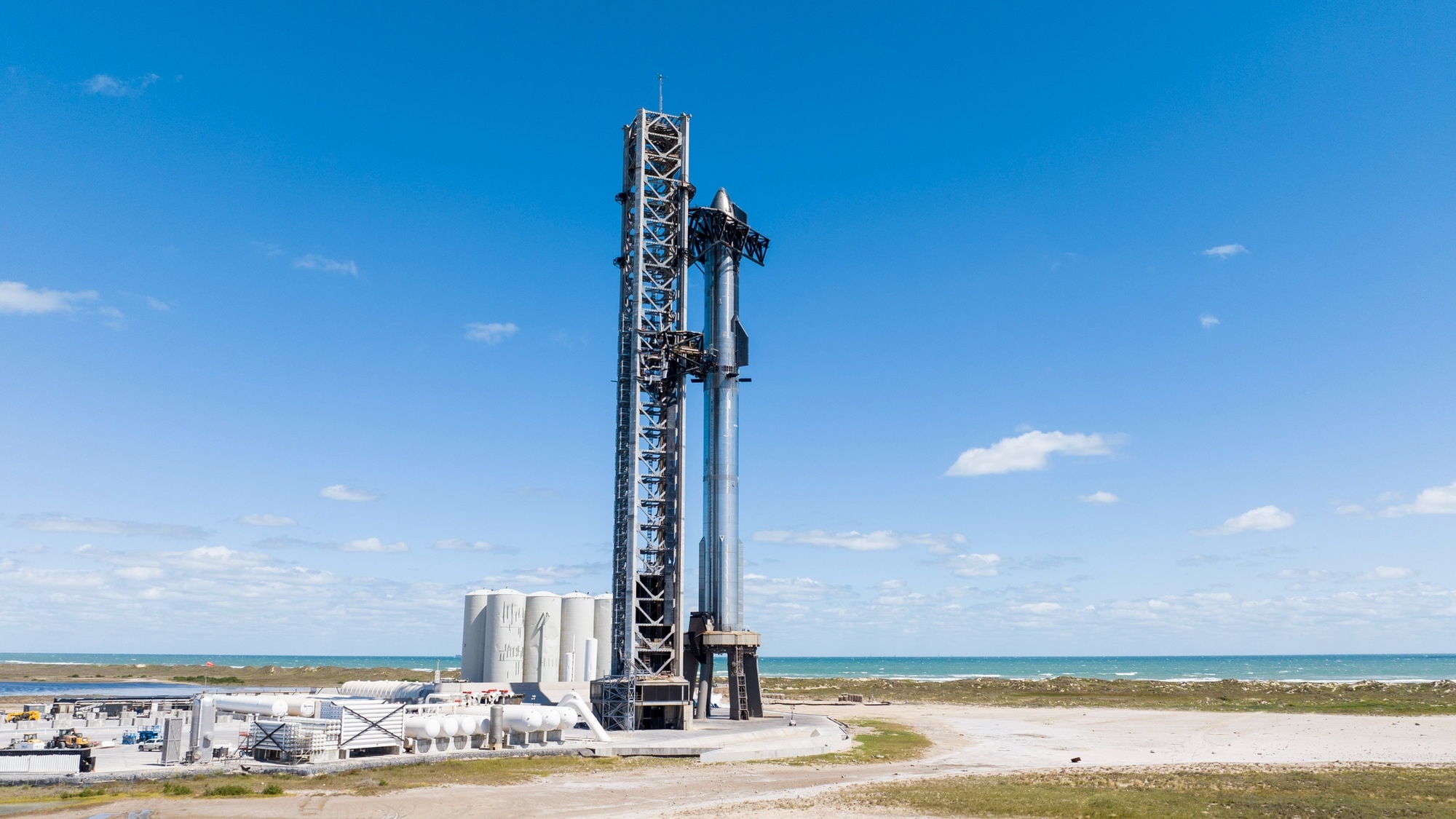
SpaceX’s Starship vehicle undergoing testing for a second test flight, which is pending an updated FAA launch license. Credit: SpaceX
WASHINGTON — A SpaceX executive used a Senate hearing to express frustration with the slow pace of launch licensing reviews that is holding up the next flight of the company’s Starship vehicle.
At a hearing of the Senate Commerce Committee’s space subcommittee Oct. 18, Bill Gerstenmaier, vice president of build and flight reliability at SpaceX, said the next Starship vehicle is ready for flight but is on standby waiting for an updated launch license from the Federal Aviation Administration.
“Starship has been ready for its next flight test for more than a month, but we are waiting for an FAA license and accompanying interagency review,” he said in his opening remarks. “The Office of Commercial Space Transportation, known as AST, must recognize where the industry is, where the industry is going and its role in regulating this emerging industry.”
The company is continuing additional tests on the vehicle, including recently stacking the Starship upper stage on its Super Heavy booster. Gerstenmaier said the company was planning a fueling test and practice countdown, known as a wet dress rehearsal, in the coming days.
“We’re doing that just because we have the time,” he told reporters after the hearing. “We get the wet dress for free when we load for launch, but if we’re not going to get the launch license, it’s to our advantage to load now and reduce that risk.”
“This is super hard because we have an unknown timeframe for when we’re going to get the license,” he said. Engineers find additional work to do on the vehicle, he noted, “but when we don’t know what the timeframe is, we don’t know how much work to do.”
He said the company is “trying to lean forward” with launch preparations, including maritime notices for potential launches that require two weeks of advance notice. “I can’t stay in limbo forever.”
In an interview last month, Kelvin Coleman, FAA associate administrator for commercial space transportation, who leads AST, said he expected the FAA would close out its review of actions SpaceX must take from the previous Starship launch related to public safety by late October. That will be a key milestone towards updating the launch license.
However, he noted then that the license will also depend on the U.S. Fish and Wildlife Service’s review of the environmental effects of changes to the launch pad, including a water deluge system intended to minimize the damage from the first launch. While Coleman said he hoped that would be concluded “somewhere in proximity” to the safety review, a Fish and Wildlife Service spokesperson said last month that it could take up to 135 days to perform that assessment.
While Gerstenmaier told reporters that the FAA is “trying as hard as it can” and endorsed giving AST more resources, in his testimony he called on that agency and others to adopt a different mindset to licensing reviews.
“AST’s role is to protect public safety, not to ensure success of rocket launches,” he said in his opening remarks. “Safe failure and rapid learning are often the fastest path to successful development.”
He argued that was particularly true for national priorities, like the Artemis program. SpaceX is developing a version of Starship as a lunar lander that will fly on Artemis 3, the first crewed landing of the program, and at the hearing he warned delays in its development linked to licensing could mean that China would land humans on the moon first.
“When it comes to projects of national interest, such as the Artemis program, Congress should establish a regulatory regime consistent with the national program’s objectives and schedules. Other government agencies that participate in AST licensing, like those with environmental responsibilities, should also be required to complete their work consistent with the national program schedules,” he said.
Gerstenmaier said that SpaceX was trying to pursue an “aggressive test program” for Starship. “With that approach, it’s important that we go fly as soon as we can. The hardware is really ready to go fly. When we have regulatory delays, such as we’re facing right now, that slows down developmental test flights and ultimately slows down our support to NASA, slows down our support for what we need to do to return humans back to the surface of the moon again.”
He declined to say when the lunar lander Starship would be ready “at AST’s current speed” of licensing when asked by Sen. Ted Cruz (R-Texas), ranking member of the Commerce Committee. “It’s hard to say,” Gerstenmaier said. “To be fair, we also have huge technical challenges.” Those challenges, he said, argued for a rapid test flight program.
Gerstenmaier told reporters he did not directly feel pressure from NASA to accelerate testing of Starship. “If we want to be a leader in space, I feel an unbelievable pressure to fly as soon as we can fly and learn as much as we can. So, we’re trying to move. We’ve got a lot of challenges in front of us to meet to requirements we received from NASA. The only way we can get there is by flying.”
Quelle: SN
----
Update: 2.11.2023
.
FAA completes safety review for next Starship launch
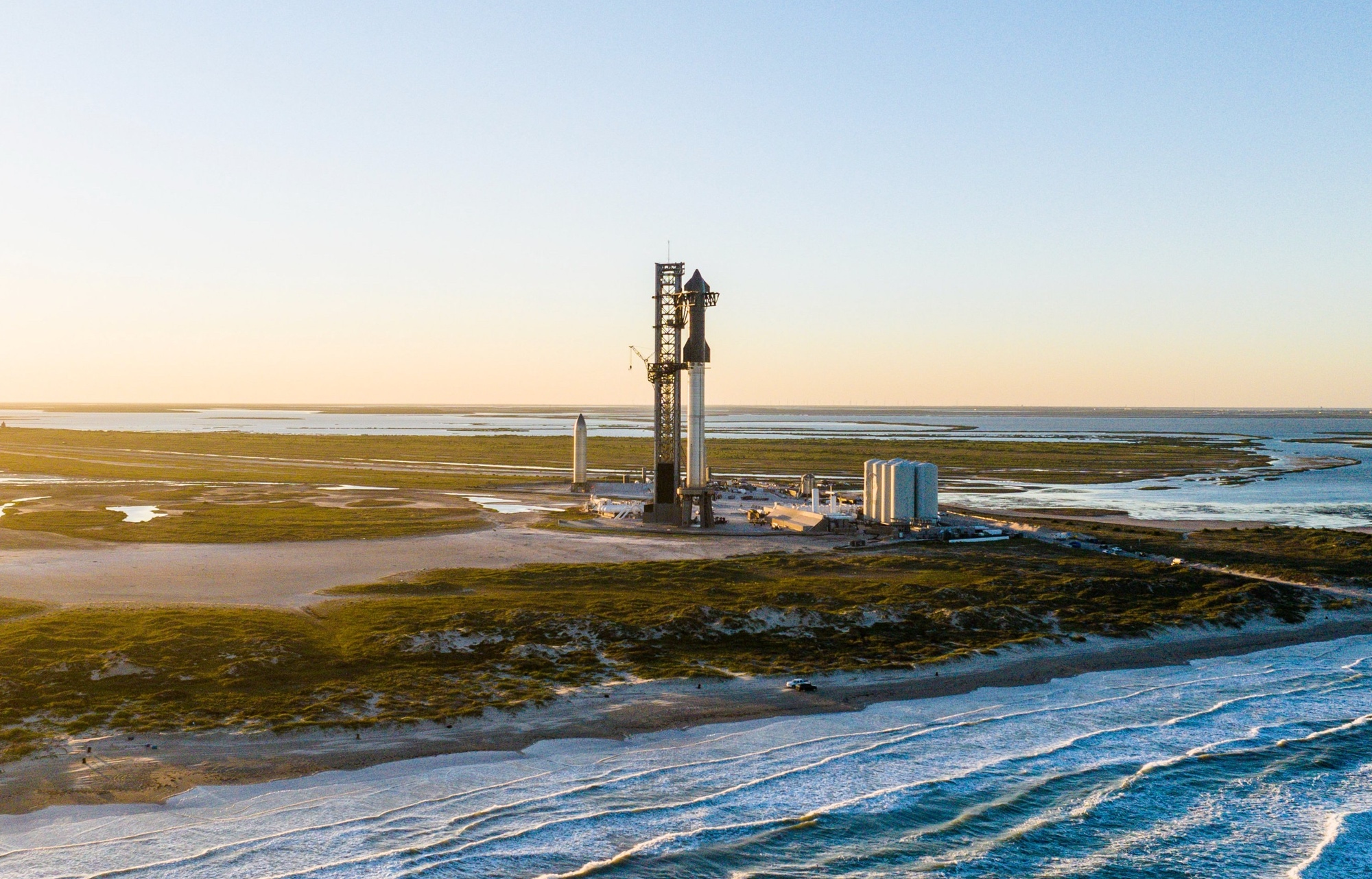
The FAA said it completed the safety review needed for an updated Starship launch license, but an environmental review is still in progress. Credit: SpaceX
WASHINGTON — SpaceX is one step closer to getting an updated license for its next Starship launch but must still wait for the completion of an environmental review.
The Federal Aviation Administration said Oct. 31 that the agency had completed the safety review portion of the Starship/Super Heavy license evaluation that day. The safety review covers the portions of launch operations that affect public safety.
The updated license is required for the next integrated Starship launch. The FAA, when it closed on Sept. 8 the mishap investigation into the first Starship/Super Heavy launch in April, identified 63 corrective actions for SpaceX, of which 27 were related to public safety.
“One thing that we’ll need to see before the next operation is evidence that shows that the company has closed out the corrective actions that are specifically tied to public safety,” Kelvin Coleman, FAA associate administrator for commercial space transportation, said in a Sept. 18 interview. He predicted then that the safety review would be completed by the end of October.
The completion of the safety review, though, does not mean the FAA is ready to update the Starship launch license and allow another launch to proceed. The FAA is continuing to work on an environmental review, including consultation with the U.S. Fish and Wildlife Service (FWS) regarding any environmental effects of a new water deluge system installed on the Starship launch pad at Boca Chica, Texas.
FWS, in an Oct. 26 statement, said it had formally reinitiated an Endangered Species Act consultation with the FAA about modifications to the pad on Oct. 19. “We have up to 135 days to issue an amended biological opinion but do not expect to take the full amount of time,” FWS stated, but did not offer a more precise estimate of the time needed to complete the review.
The licensing process, both with the FAA and the environmental consultation with FWS, has been a source of frustration for SpaceX. “Starship has been ready for its next flight test for more than a month, but we are waiting for an FAA license and accompanying interagency review,” said Bill Gerstenmaier, SpaceX vice president for build and flight reliability, at a hearing of the Senate Commerce Committee’s space subcommittee Oct. 18.
He called for a faster review of license proposals, particularly for “projects of national interest,” a reference to Starship’s role as a lunar lander for NASA’s Artemis lunar exploration campaign.
“When it comes to projects of national interest, such as the Artemis program, Congress should establish a regulatory regime consistent with the national program’s objectives and schedules,” he said. Agencies supporting the FAA licensing process, “like those with environmental responsibilities, should also be required to complete their work consistent with the national program schedules.”
Quelle: SN
----
Update: 12.11.2023
.
SpaceX and NASA looking to launch prototype Starship, awaits second test flight
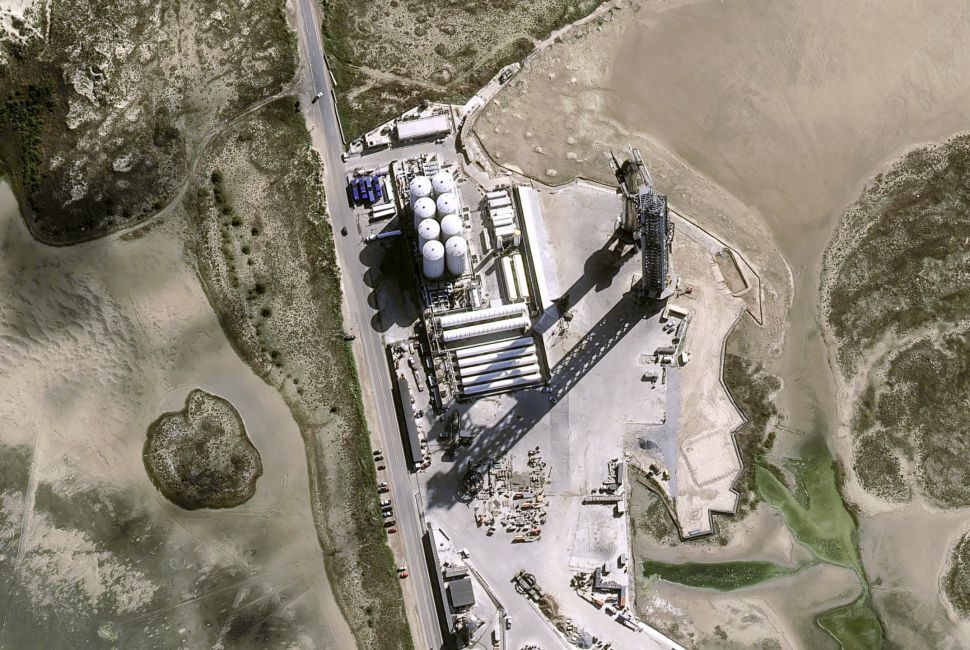
BREVARD COUNTY, Fla. — SpaceX said its prototype Starship is ready for its second flight test pending regulatory approval.
After April’s explosive first flight over Texas, an environmental review is still underway.
Both SpaceX and NASA are looking to Starship to help humanity return to the moon and beyond.
But, the company is still waiting on its Federal Aviation Administration launch license.
SpaceX is developing a Starship human landing system for NASA’s Artemis III mission, the agency’s next lunar landing with astronauts.
“Before they even try to land humans on Artemis III, they’ve got to do an uncrewed test flight one year before,” said Dr. Ken Kremer of Space Up Close. “So that would be next year if they’re aiming for 2025, which seems extremely unlikely.”
This month, NASA’s Office of Inspector General identified returning humans to the moon as one of the agency’s top management and performance challenges.
The OIG report says that after the successful integrated test flight of NASA’s SLS rocket and Orion spacecraft, the focus is now on Artemis II.
And NASA must address various challenges to safely fly four astronauts on their 10-day mission around the moon.
Looking ahead to Artemis III, NASA officials are concerned that technical difficulties associated with SpaceX’s Starship human landing system will delay the mission currently scheduled from Dec. 2025 to sometime in 2026.
The report says the extent of delays will depend on when SpaceX can resume flight testing of the Starship.
“On top of the technical challenges, there are these funding challenges, and they all work together,” Kremer said. “So, if the Congress doesn’t get its act together and support NASA and other science objectives in the federal government, these Artemis moon landings will be delayed.”
SpaceX said it has made a number of modifications since its first flight test to improve the probability of success of future flights.
Quelle: WFTV9
----
Update: 14.11.2023
.
SpaceX hopes for second Starship flight test next week
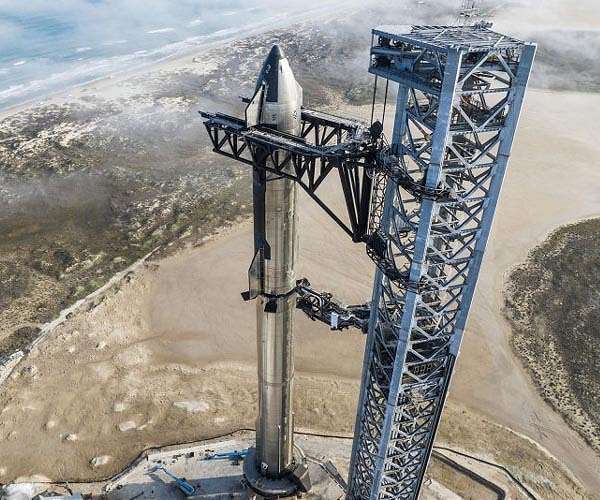
SpaceX is hoping to re-launch Starship, the most powerful rocket ever built, next week, the company said, after an attempt in April ended in a spectacular explosion.
"Starship preparing to launch as early as November 17, pending final regulatory approval," SpaceX said on X Friday evening.
SpaceX foresees Starship as a next-generation, fully reusable spaceship that will eventually carry both crew and cargo to Mars.
The project is being followed closely by NASA, which has contracted a version of Starship to function as a lunar lander for its Artemis program to return astronauts to the Moon by the middle of this decade.
On April 20, SpaceX blew up the uncrewed rocket four minutes after it blasted off from the company's Starbase in Boca Chica, Texas. Starship experienced multiple engine failures, and its first-stage booster did not separate from the spacecraft above it.
The rocket disintegrated into a ball of fire and crashed into the Gulf of Mexico, sending a dust cloud over a town several miles (kilometers) away.
The Federal Aviation Administration needs to issue a launch license for a second test to be attempted. The regulator completed its safety review of Starship in October, but the project still needs a sign-off from the US Fish and Wildlife Service for the license to be given.
A new Starship currently stands ready at the launchpad, according to publicity material posted by SpaceX.
Starship, which stands 394 feet (120 meters) tall, produces 16.7 million pounds (74.3 Meganewtons) of thrust, more than double that of the Saturn V rockets used to send Apollo astronauts to the Moon.
Starship is designed to be fully reusable, with both stages meant to return to Earth, thus greatly reducing costs.
Since the first test from Boca Chica, Starship's separation system has been overhauled, Elon Musk said during a conference in early October, adding that testing this new system would be the "riskiest part of the flight."
"I do want to set expectations not too high," the SpaceX CEO said.
The flight plan will be similar to the one in April. After separation, Starship is to continue to an altitude "a scooch below orbit," according to Musk, completing a near-circle of the Earth before splashing down in the Pacific Ocean near Hawaii.
Quelle: SD
----
Update: 17.11.2023
.
Starship cleared for Nov. 17 launch
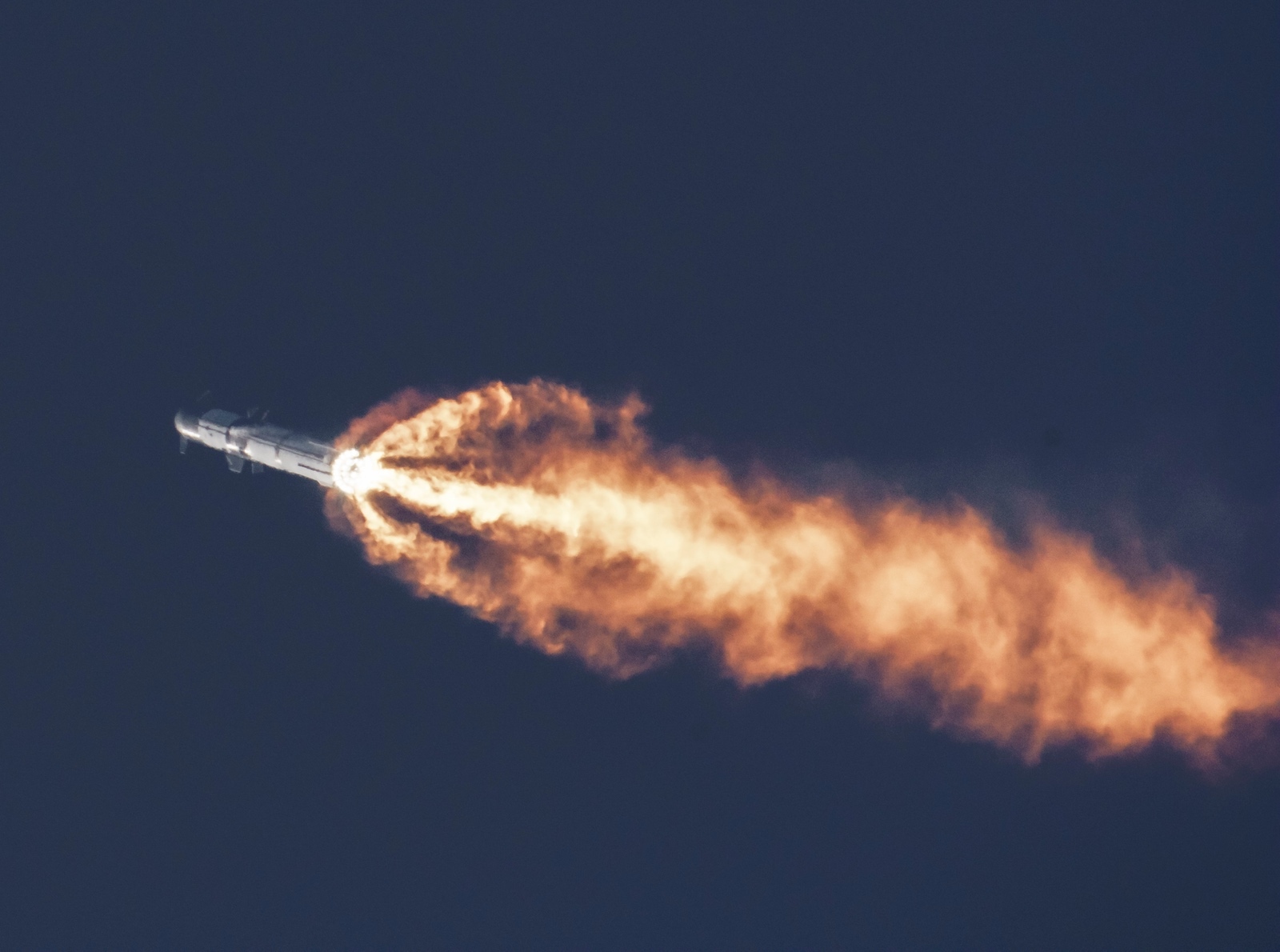
HAMBURG, Germany — SpaceX received the final regulatory approvals Nov. 15 that allow the company to proceed with the second integrated Starship/Super Heavy launch, scheduled for as soon as the morning of Nov. 17.
The Federal Aviation Administration announced Nov. 15 that it had issued SpaceX an updated launch license for the vehicle. “The FAA determined SpaceX met all safety, environmental, policy and financial responsibility requirements,” the FAA said in a statement.
The final step in securing a license was a completion of an environmental review by the U.S. Fish and Wildlife Service (FWS) of upgrades to the Starship launch pad at Boca Chica, Texas, notably the addition of a water deluge system. That system is intended to reduce the potential for pad damage seen in the first Starship launch in April.
FWS, in a statement earlier in the day, said that it had finalized its review “and concluded our formal consultation with the FAA.” That review formally started Oct. 19 and the agency said then it could take up to 135 days to complete but that it did not “expect to take the full amount of time.”
The review found no significant environmental changes caused by that deluge system as well as other adjustments, such as an enlarged area searched for any cultural artifacts. It concluded the findings of the original review “are still substantially valid and pertinent conditions and requirements of the prior analysis and approval have been, or will be, met in the current action.”
SpaceX had said that it was planning a launch no earlier than Nov. 17, pending regulatory approvals. The company confirmed those plans after the FAA announcement, stating that liftoff was scheduled for a two-hour window that opens at 8 a.m. Eastern.
The mission is called Orbital Flight Test 2 in the FAA license, although, as with the first launch, Starship is not designed to complete a full orbit. The spacecraft will instead splash down off the coast of Hawaii about 90 minutes after liftoff, if the flight goes as planned.
The first flight, of course, did not follow that plan, and the vehicle was destroyed by its flight termination system about four minutes after liftoff once a series of engine failures led to a loss of control. SpaceX Chief Executive Elon Musk said in June that the company made “well over a thousand” changes to Starship/Super Heavy based on lessons from the first launch and other desired upgrades. He estimated then a 60% chance of a successful flight.
Quelle: SN
